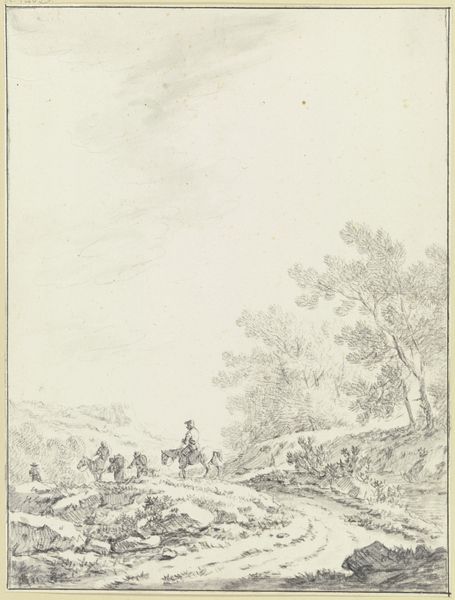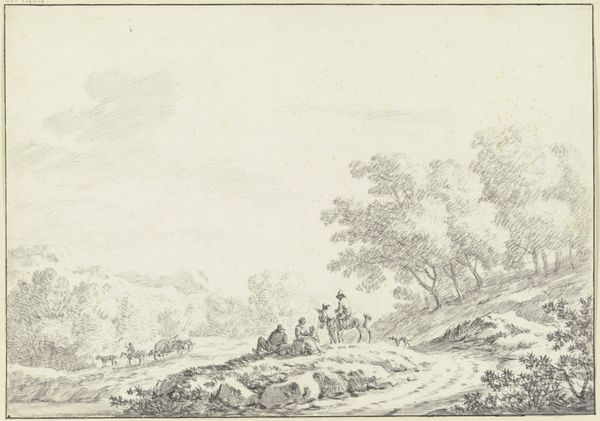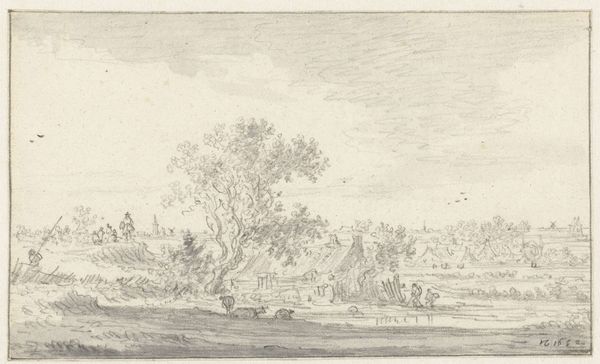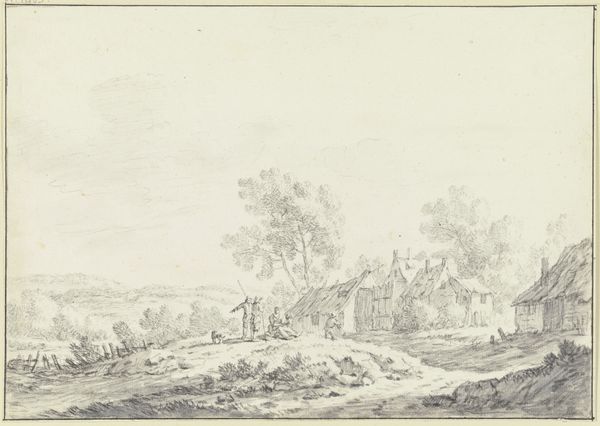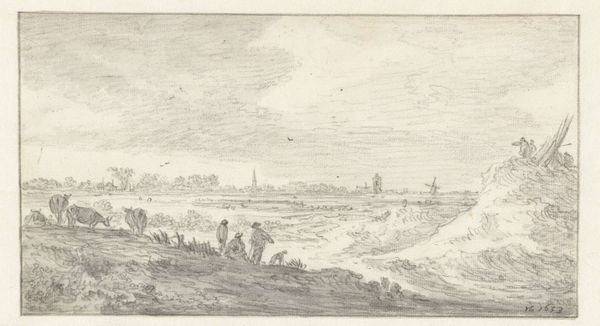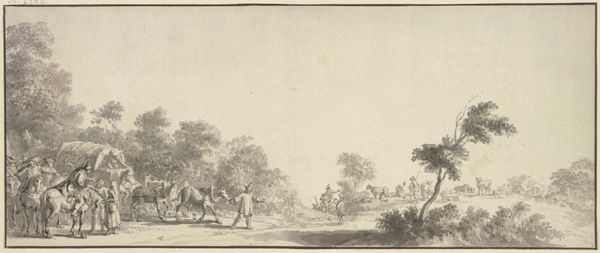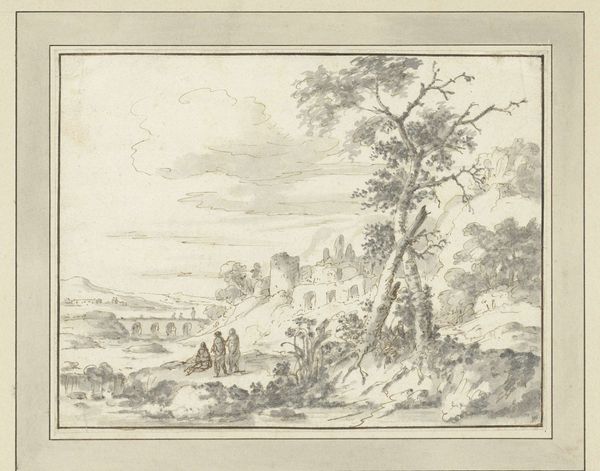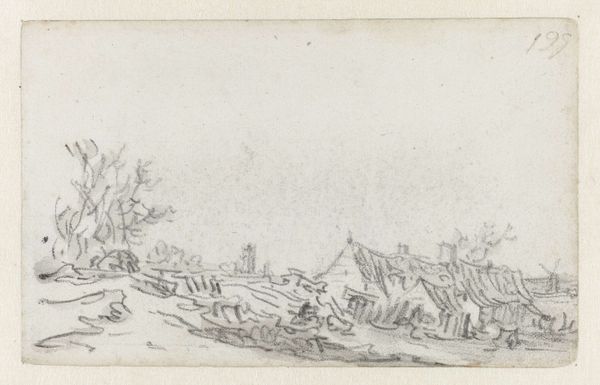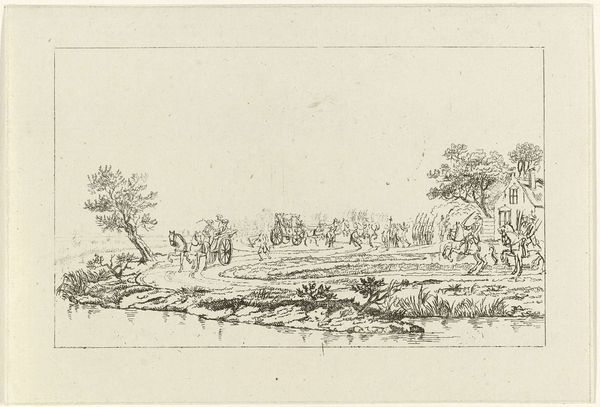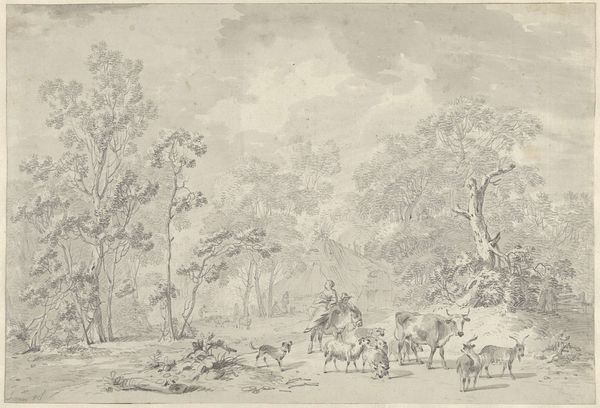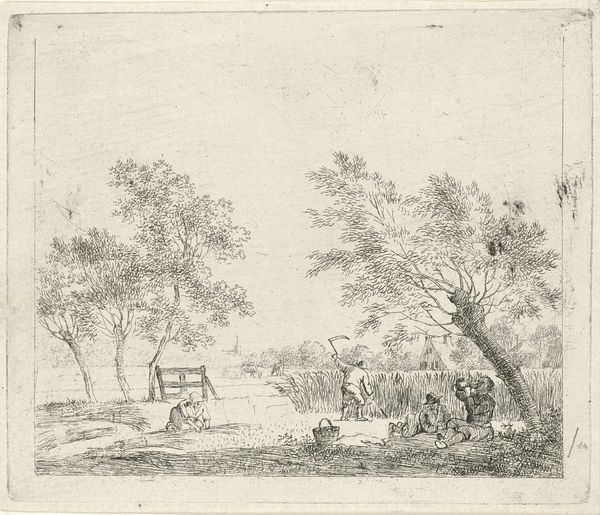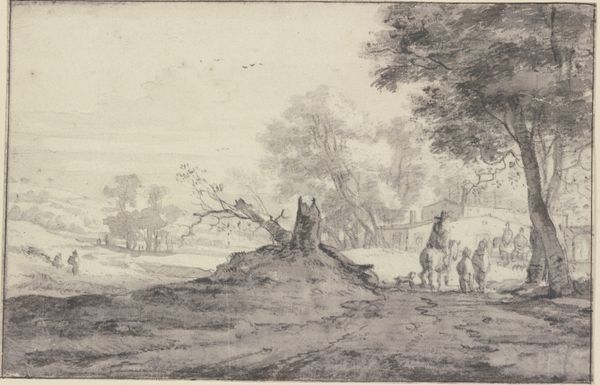
drawing, etching, ink, pencil
#
drawing
#
baroque
#
etching
#
pencil sketch
#
landscape
#
ink
#
pencil
#
pen work
#
genre-painting
Dimensions: height 185 mm, width 166 mm
Copyright: Rijks Museum: Open Domain
Editor: Here we have Karel du Jardin's "Italian Landscape with Resting Traveler and Donkeys," created sometime between 1632 and 1678. It's a drawing using pencil, ink, and etching. It strikes me as very tranquil, almost dreamlike. How do you approach interpreting a landscape like this? Curator: Considering Du Jardin's context, let's look at the *means* of its production. Notice the blending of drawing, ink, and etching: techniques readily available, materials that allowed for mass production and circulation. This wasn’t some unique oil painting meant only for a wealthy patron’s wall. Editor: So you’re saying the method affects the message? Curator: Precisely! Think about it: etching allowed for multiple prints. Who bought them? Who had access to these images of Italian landscapes? Was this art reaching new audiences and democratizing imagery, bringing visions of Italy to the aspiring Dutch middle class, fueling desires and shaping perceptions of labor, leisure and perhaps challenging the conventional high art associated with painting? Editor: I hadn’t considered it that way! I was so focused on the *scene* itself, but you’re highlighting its *distribution* instead. So the “Italian Landscape” becomes less about an actual place and more about…access? Curator: Access, aspiration, and perhaps a burgeoning tourist economy facilitated by increasingly efficient production and trade networks. How does the relatively ‘cheap’ availability of such a print effect perceptions of both art and travel at the time, do you think? Editor: Interesting! So, I guess looking at the materials and processes offers a window into the social forces shaping artistic creation and consumption? Thanks! Curator: Exactly! And hopefully makes you consider the work not as just an aesthetic object, but as a cultural artifact deeply embedded in its historical moment.
Comments
No comments
Be the first to comment and join the conversation on the ultimate creative platform.
